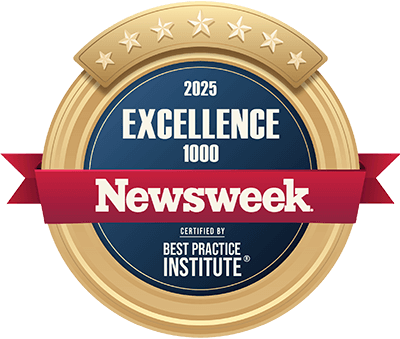How to Test Software for Different Types of Bugs
A Detailed Testing Plan and Bug Classification
ScienceSoft provides comprehensive software testing services for over 36 years.
Why Do You Need Bug Classification in Software Testing?
During software testing, accurate bug classification and prioritization is crucial for assigning the found defects to the responsible project teams, thus streamlining not only the bug-fixing process, but also the testing and development workflows.
Relying on decades-long experience in software QA, ScienceSoft’s testing engineers outline the key steps of the testing process for different types of bugs and share best practices for correct defect prioritization.
Key Bug Classification Types
Bugs by nature of testing
The first type of defect classification is based on the nature of testing. At ScienceSoft, we usually single out the following key types of defects:
Functional bugs can be revealed during smoke, system, integration, regression, and user acceptance testing. A feasible share of test automation during functional testing is the key to making the process cost- and time-effective.
Usability defects are revealed during usability testing, UX audit, or UX research. ScienceSoft applies expert-based (e.g., heuristic evaluation and cognitive walkthrough) and user-based (interviews and surveys of the TA, executing scenarios by members of the TA) techniques to promptly detect usability issues.
Detecting security defects requires vulnerability assessment, penetration testing, security code review, and more. Software compliance assessment (e.g., for HIPAA, PCI DSS, GDPR) can be considered a part of security testing as well. Security testing can be both manual and automated, depending on the needs of each specific project.
Bugs by severity and priority
The next type of bug classification is based on how seriously the defect affects the software and how promptly it needs to be fixed.
Defects by severity
To determine bug severity, test engineers consider how strongly it impacts the software functionality, performance, usability, etc. and how frequently it occurs. According to this classification, bugs can be critical, high-, medium-, and low-severity.
Defects by priority
To prioritize bugs, test engineers look at the business impact of a defect (including the number of users affected, the threat to the company’s image, the resulting business disruptions, losses, etc.). Thus, bugs can be classified as urgent, high-, medium-, and low-priority.
Classifications by severity and priority are not necessarily interconnected. For example, a low-severity defect can be of high priority, like a broken website layout or typos on the landing page. Such bugs do not affect functionality, but they are likely to undermine the brand image and customer experience. Another example is a critical bug of low priority: a layout is displayed incorrectly in legacy browsers. If only a few occasional users access the website via those outdated browsers, fixing the defect will not be of high importance, even though the whole app is affected.
A Go-To Testing Process to Cover All Bug Types
While it is essential to classify and prioritize defects correctly, establishing a comprehensive testing process that will allow you to timely reveal and eliminate any category of bug is even more important. Below, ScienceSoft’s testing experts outline a high-level software testing process that stays largely the same regardless of the testing type.
01.
Requirements analysis and test planning
- Analyzing the existing software requirements or helping draft testable specifications.
- Deciding on testing objectives and the types of testing to perform (functional, performance, security, etc.).
- Defining the criteria for assessing the severity and priority of found defects.
- Defining the required team composition, estimating the testing cost, timelines, choosing the optimal testing and defect tracking tools, etc.
- Defining the share of test automation (if feasible).
- Outlining the KPIs to measure the testing effectiveness: e.g., average test execution time, the number of created test cases, average and total number of found defects, defects rejected by the development team, requirements covered by test cases, test automation rate, and more.
I strongly recommend involving QA specialists as early as at the requirements specification stage. A QA team needs to make sure that the requirements are fully testable from the very beginning of the SDLC: it will help perform comprehensive testing and avoid costly redevelopments later on.
02.
Test design
- Creating test cases and writing automated test scripts.
- Preparing the required test environment and test data.
- Configuring the relevant test automation frameworks and tools, if needed.
03.
Test execution and defects reporting
- Executing the test cases and running automated test scripts.
- Submitting the found bugs into the defect tracking tool, classifying and prioritizing them.
- Retesting the software to validate the fixed defects.
- Running regression testing to make sure no related functionality has been affected by recent fixes.
- Providing test results reports based on the chosen KPIs and analyzing the effectiveness of the QA process to implement the necessary improvements.
Not every project needs 4+ severity or priority levels for efficient defect classification. Smaller projects usually do well enough with just 3 levels (critical, medium, low), while large-sized projects need a more elaborate system to clearly differentiate between high- and maximum-urgency tasks.
What’s more, most bug tracking systems offer severity and priority settings by default. Still, I recommend setting an additional classifier for the nature of the defect (e.g., functional, performance, usability, etc.) as this simplifies the assignment of bug-fixing tasks to the responsible teams.
Consider Professional Software Testing Services by ScienceSoft
Why ScienceSoft
- 36 years in software testing and 24 years in test automation services.
- Trusted by global brands, including Deloitte, IBM, Walmart, eBay, Nestle, NASA JPL, Viber, and more.
- ISTQB-certified testing experts on board.
- ISO 9001- and ISO 27001-certified to prove our commitment to providing quality services and ensuring full security of our clients’ data.
- Experience in 30+ industries, including healthcare, manufacturing, finance, retail, telecommunications, and more.
- Standardized defects description, test cases design, and test reporting in accordance with ISO/IEC/IEEE 29119-3:2013.
Our awards, recognitions, and certifications
Team Required to Test for Different Types of Bugs
The testing team composition will vary depending on the project scope and the type of testing you need to perform. Still, to form an all-around QA team that will ensure comprehensive software testing, ScienceSoft usually engages the following talents:
Sourcing Models for Software Testing
Testing Tools We Employ
Automated UI testing tools
Automated mobile testing tools
API testing
Performance testing tools
Security testing tools
CI/CD tools
Test management and defect tracking software

About ScienceSoft
ScienceSoft is a global QA consulting and software testing company headquartered in McKinney, TX. Since 1989, we deliver professional testing services to validate every aspect of our clients’ software quality, from functionality to usability and regulatory compliance. Being ISO 9001 and ISO 27001-certified, we can ensure maturity of our services and complete security of the data entrusted to us.






